Meet the People of Longyearbyen
Resilient, ingenious and concerned that their world is warming up – meet the fascinating people of Longyearbyen
Join an exhilarating Arctic expedition cruise from Spitzbergen, in the mesmerizing archipelago of Svalbard, and the first place you’ll land is Longyearbyen: the northernmost city on earth. Even at the very height of the summer, in July, the last thing you’ll probably consider is that it should be much, much colder. But the people of Longyearbyen certainly wish it was.
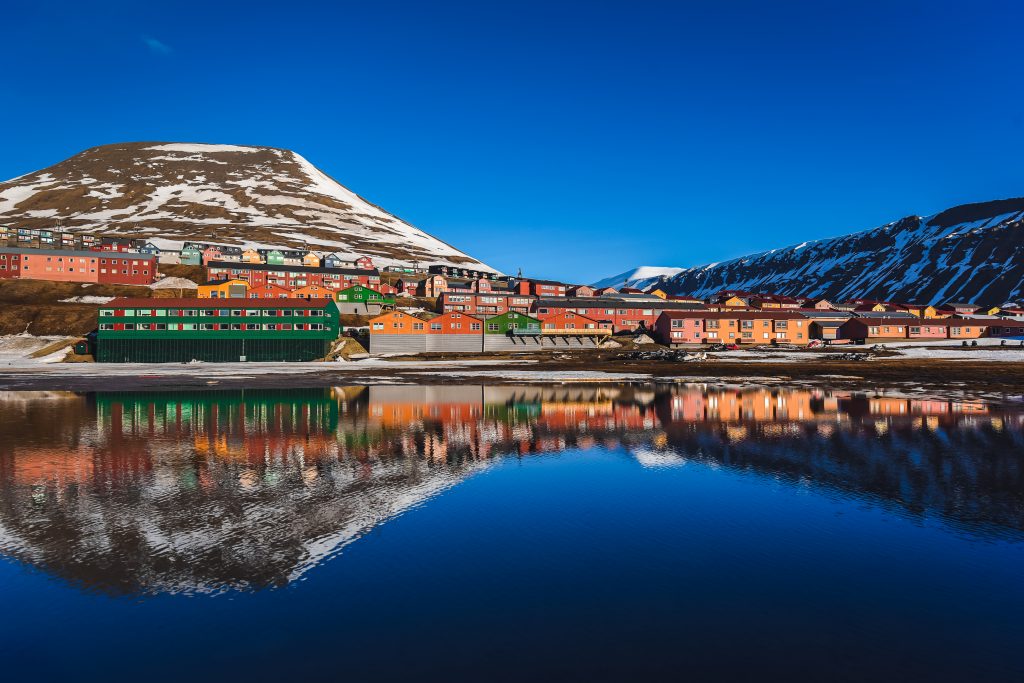
Longyearbyen is one of the most surreal places you’ll probably ever visit: this is a fully-functioning city and boasts more services then one would expect for what is, essentially, a village. Only 2000 people call this place home, a tightly-knit community of hardy folks which, once upon a time, only ever had to worry about curious polar bears heading into town for a visit. They do so sometimes in winter, when prey is hard to come by and the bears get hungry.
The people of Longyearbyen have a complex relationship with the Arctic’s largest land mammal – every household owns a rifle (it’s mandatory to have one whenever you leave the settlement) although they’re left outside of buildings and can’t be brought inside. In winter, locals leave their front doors unlocked: you just never know when a bear breaks through the window and you must make a hasty getaway. And when you need to grab that rifle. Bear sightings are highly unusual in Longyearbyen., although they are happening more frequently.

These are fascinating stories for visitors to hear, of course. We spend a considerable amount of time and money to reach Longyearbyen so we can see the polar bears, whilst, for locals, an encounter is about the last thing they want. At first, it’s disconcerting to see people walking around with a rifle slung on their shoulder but after hearing some of the stories, it’s somewhat comforting. Yet astonishingly, the people of Longyearbyen have a long-standing passion for the animals’ welfare and their desire to ‘never run into one’ is as much about the best interest of the polar king as it is about their own welfare.
It makes sense, however, when you know that Longyearbyen boasts no indigenous population, as such. Everyone who lives here – except for small children – is here by choice. The passion for this incredibly mesmerizing place and its wildlife inhabitants runs deep.
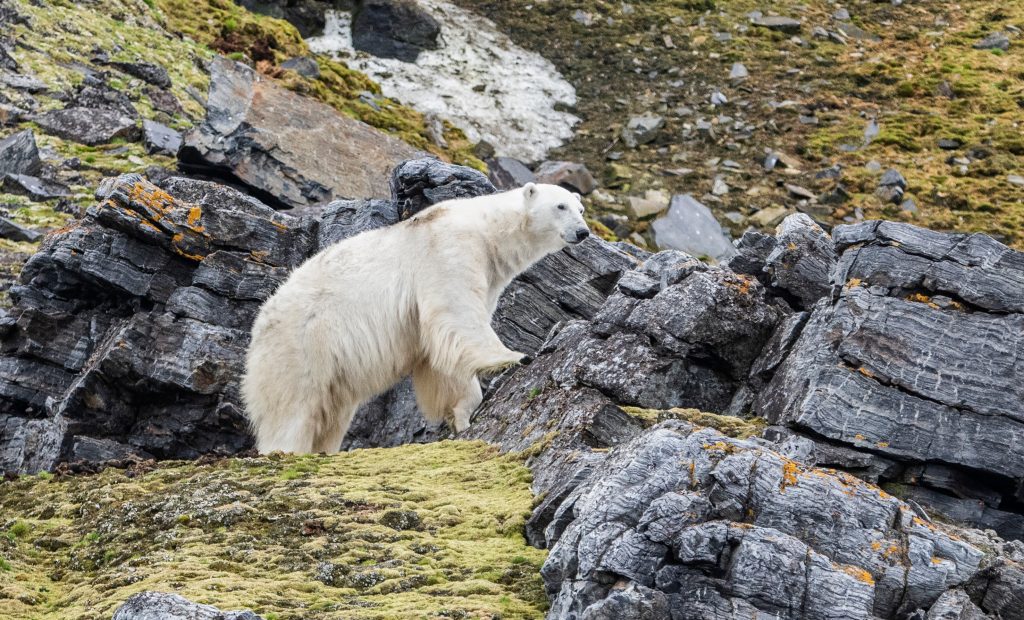
The City of Longyear (that’s what Longyearbyen means, in Norwegian) was founded by John Longyear, an American coal prospector who set up base here in 1906, along with 500 miners. Winters are tough today so we can only imagine how brutal it must have been, back then. Today, Longyearbyen gets everything it needs from the outside world but, in many ways, it doesn’t even feel so remote. There’s even a fine-dining joint in town, Huset, revered for having one of the most comprehensive wine-cellars of any restaurant in Europe. Heaven forbid one runs out of wine, in the heart of the cold, dark and frosty winter. Best have 20,000 stocked up, just in case.
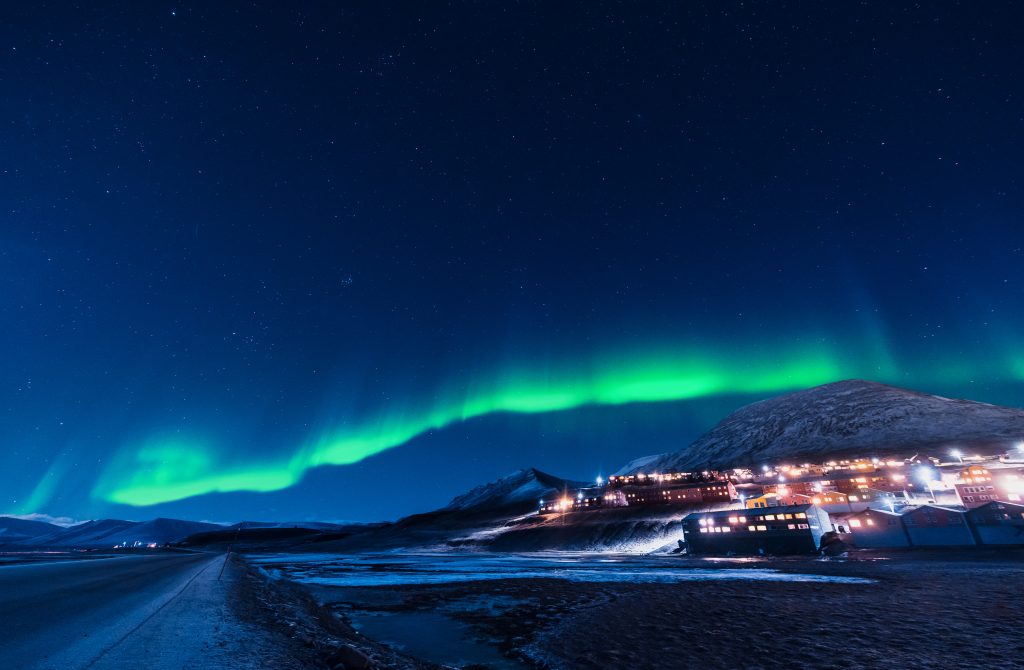
The long and harsh winters of Longyearbyen are cloaked in darkness, although if you come here expecting a quiet and desolate place, you’ll be pleasantly surprised. Events, live music gigs, dances, choirs, performances and sporting tournaments are held all winter long. If anything, the people of Longyearbyen are infinitely more sociable in winter than they are in summer and that’s why if you add a few days here at the end or start of your Arctic expedition cruise, you’ll want to fill them with a bunch of exhilarating activities. There’s not much to do in Longyearbyen itself, in summer. The town is small and shops limited, you’ll no doubt scour the town for half a day and then be ready to explore its surrounding, magnificent landscapes.
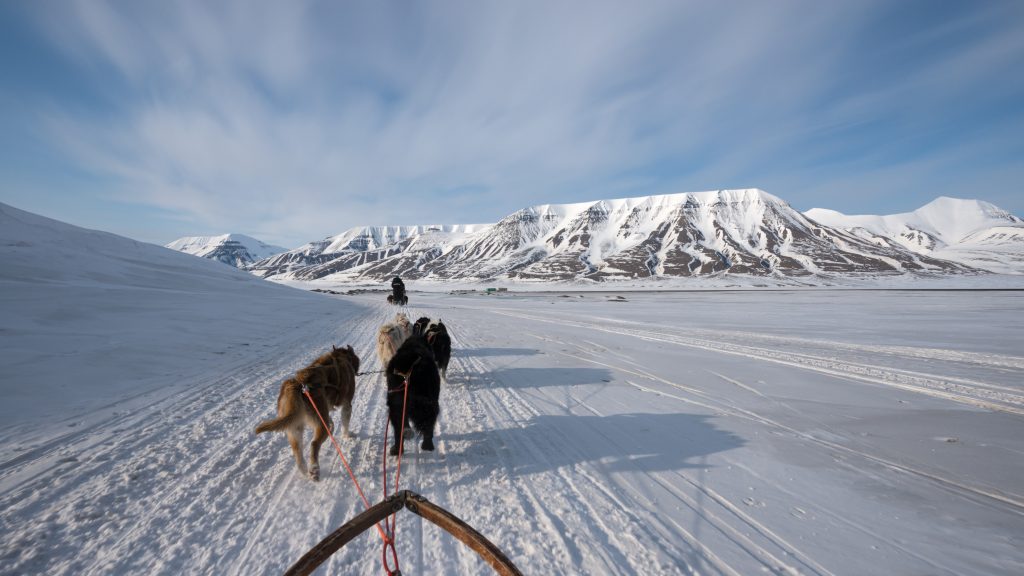
The summer in Longyearbyen is for adventure, you see, for excursions, for fishing, hiking and cycling. Locals take advantage of the short summer as fervently as the visitors do. Many are involved in tourism, naturally, and they hail from all over the world: mostly from Scandinavian countries but you’ll also find Australians living here, Germans, Russians, Poles and an impressive community of 120-odd Thai nationals, hence the lovely Thai restaurant in the centre of town and the colourful Thai Festival held in November every year. On paper, it seems like a misfit bunch of random strangers – in reality, the people of Longyearbyen are the cliché big happy family one often hears about of small towns. Except here, they’re super happy when tourists come to visit.
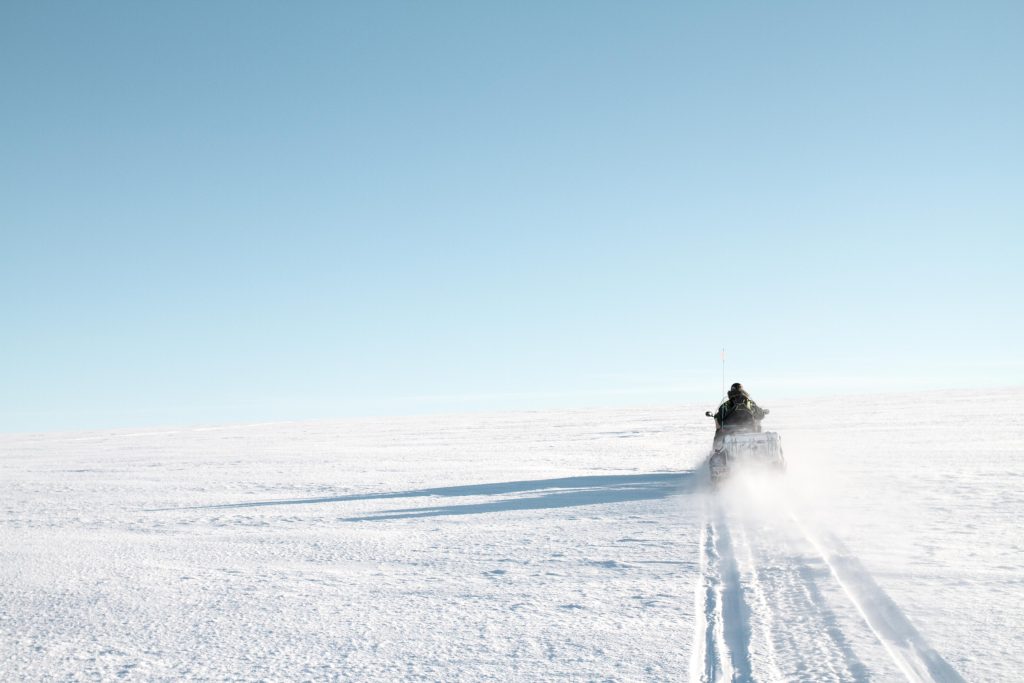
Longyearbyen is a tough place to move to, not because of the climate (as one might expect) but because it’s a closed-off economic area, in a sense. You’d better have a job already lined up when you move up here, like almost all the residents had when they first arrived. Most work in the oil and gas industry or for scientific research organizations. A few select characters who moved 20 and 30 years ago shifted to the tourism scene once that started to rise. They run and work in the bars, restaurants, souvenir shops and hotels. They take tourists kayaking and hiking, or day-long trips with snow-mobile and dog-sled adventures. Svalbard is a tax haven, of sorts, and considering Norwegian wages, the financial benefits can be considerable, despite the fact that this isn’t exactly the cheapest place in the world to live.
Most locals share similar stories: they came with a plan to stay just a short while and then found, after a decade, that they simply couldn’t leave. Longyearbyen gets under your skin, they say. You fall in love with the remoteness, the stark and dramatic landscape, the wildlife and the outdoor adventures.
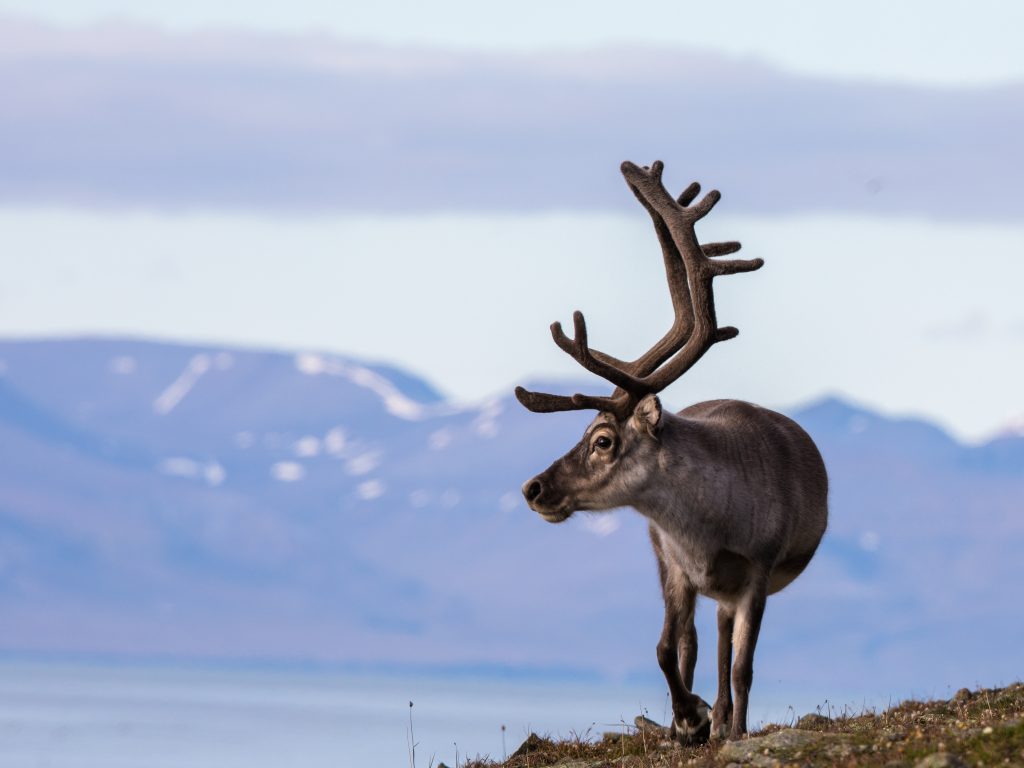
The people of Longyearbyen must be doing something right. The place doesn’t suffer from the kind of winter depression that is so common in Scandinavia and other northern regions. Seasonal Affective Disorder is a real issue in places which suffer long and harsh winters. But not here, for the greater part.
Of all the major challenges the people of Longyearbyen have faced in the last century, the most current one could well be the greatest. Longyearbyen is heating up and that could spell disaster for the town and, obviously, for the wildlife of Svalbard. Recent years has seen an increase in landslides, with a few houses buried under snow falling from the vertiginous mountains surrounding it. Scientists believe that, in just a few years, the yearly average temperature here will be above freezing and the prospect is frightening to the people of Longyearbyen. A few long-term residents have already left, fearing for a winter with no snow.
The population of Longyearbyen does have a decent turnover – not everyone stays for decades. Every 10 years or so, there’s a 25% change in the population. Those who stay longer don’t mind the fresh arrivals although many also bemoan the somewhat transient nature of their lives.
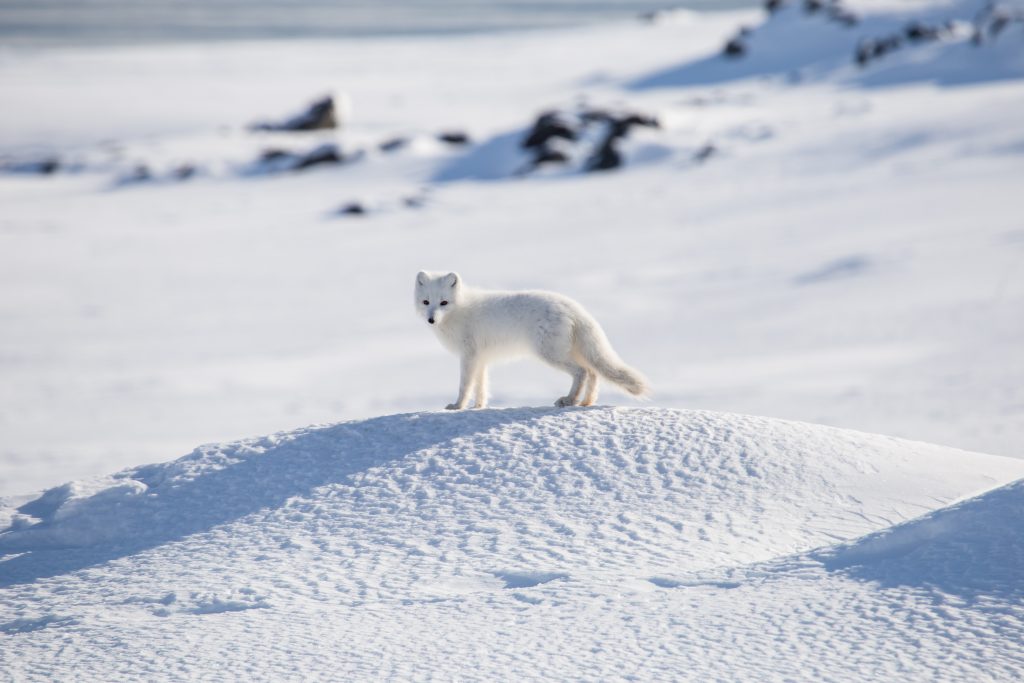
Longyearbyen is the largest settlement in the Svalbard archipelago, located on the western coastline of its largest island, Spitzbergen. Summer Arctic expeditions cruises from Longyearbyen gift visitors unrivalled chances for wildlife spotting in the north and northeast, where polar bears, seals, walruses and whales head to, once the ice recedes. The nutrient-rich waters around Svalbard attract marine life galore, with a consequential migration of seabirds, who head here in their millions, that is out of this world.
So why not come meet the wildlife and people of Longyearbyen on an Arctic expedition you’ll never forget?
Contact us here to know more about Arctic expeditions from Spitzbergen
